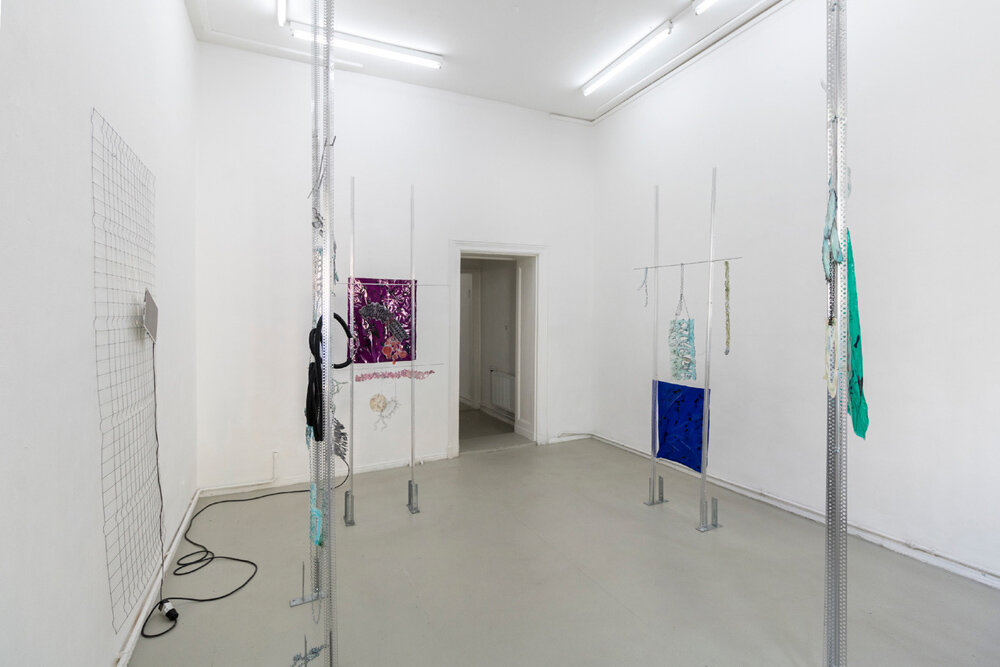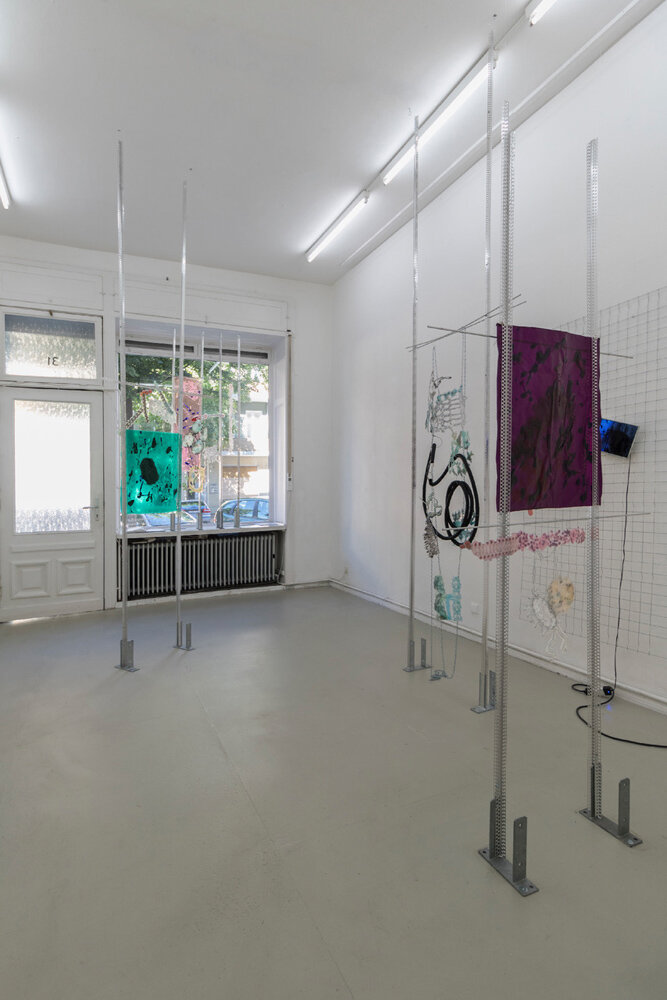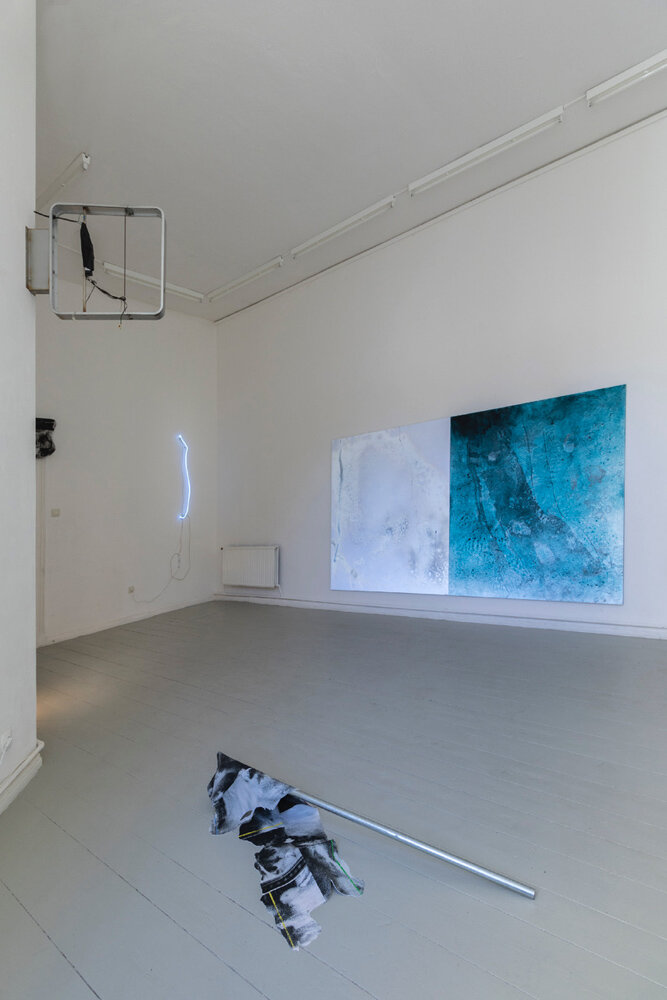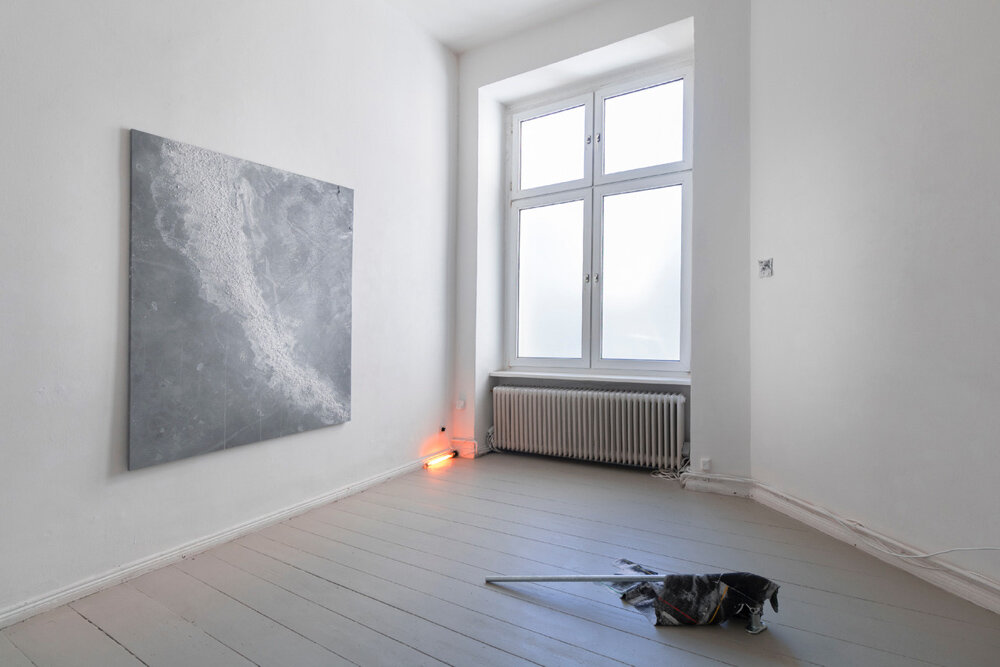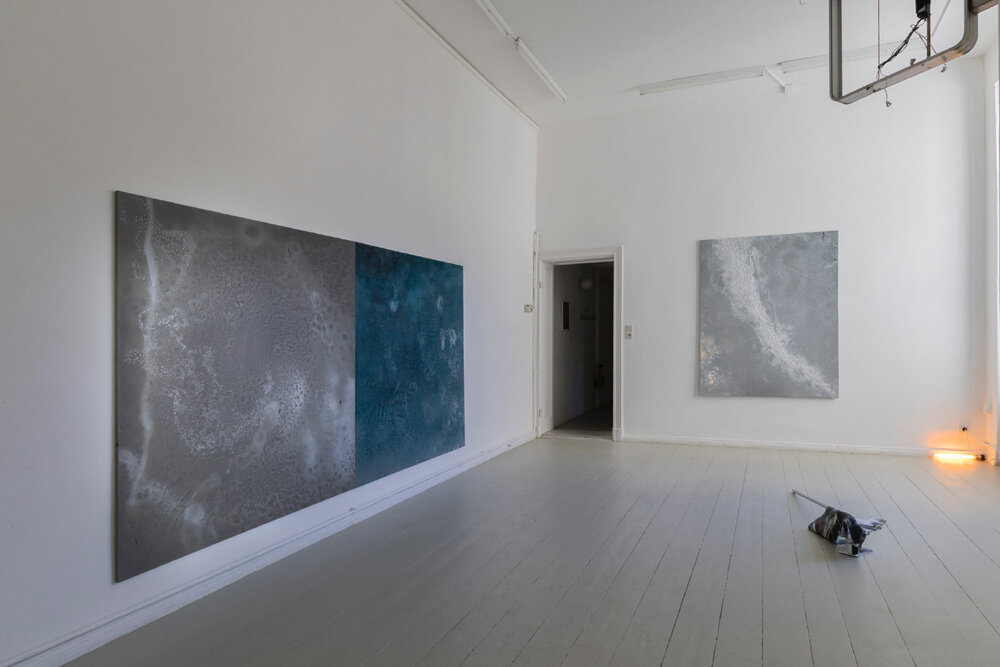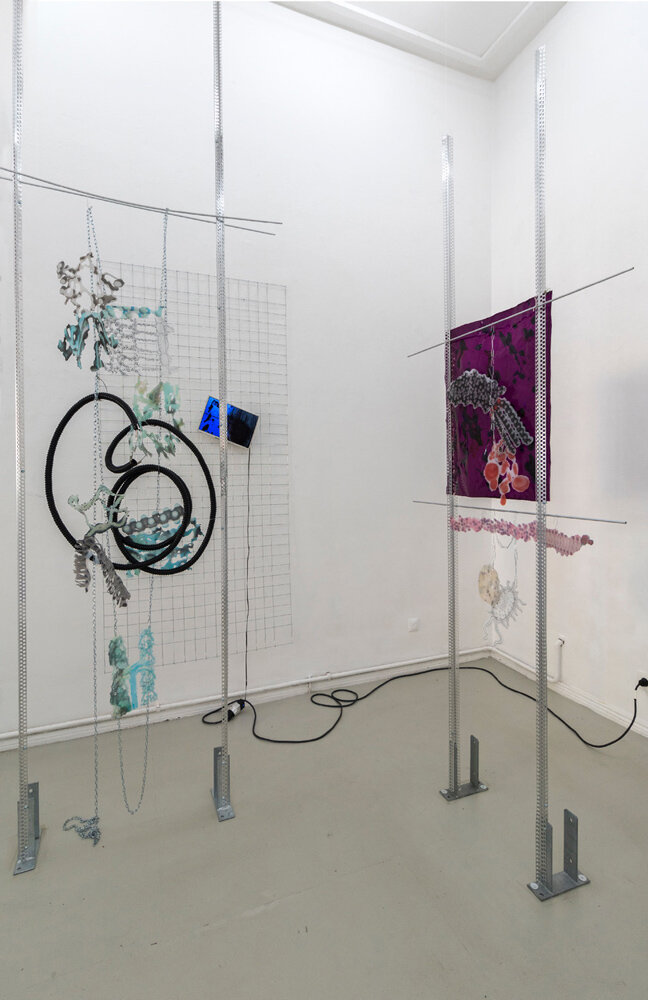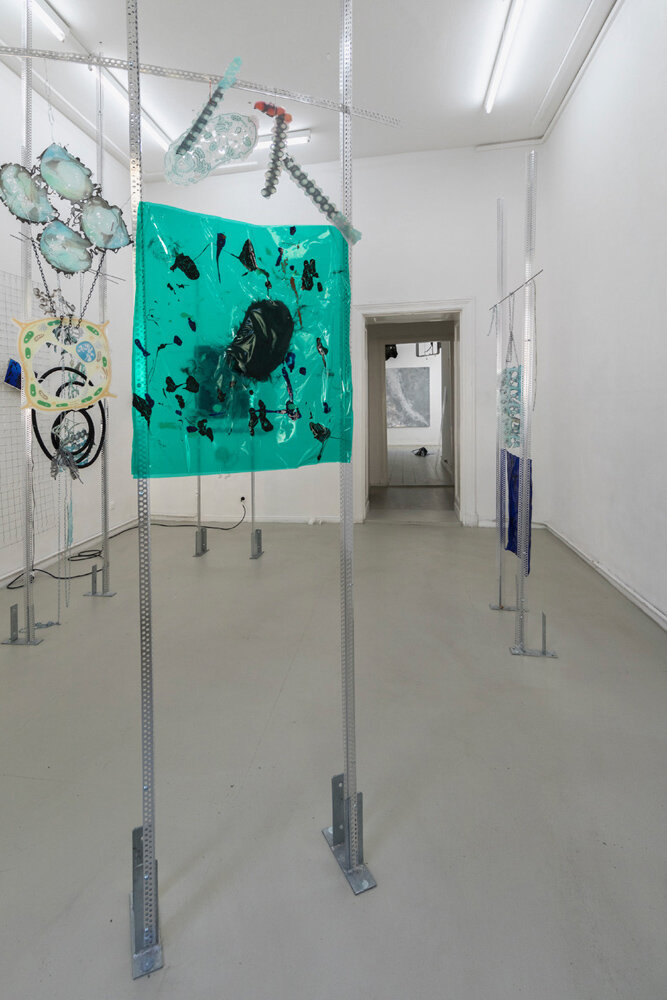PARAVENT
22 June - 01 July 2018
Agnieszka Szostek & Matti Isan Blind
PARAVENT
22 June - 01 July 2018
curated by Hannah Beck-Mannagetta
The exhibition Paravent [paʁavɑ] presents the latest works by Matti Isan Blind and Agnieszka Szostek in diptych-like form. While Agnieszka Szostek takes up the front room with her hybrid sculpture collages of conventional steel and aluminum girders, combined with semi-transparent plastic foil and acrylic paint depicting strongly magnified microorganisms, Matti Isan Blind shows both large-scale wall works from his "Reflection Deflection" series in the back room, the surfaces of which were also made of commercially available reflective textile combined with salt crystals, as well as various finds and light objects. These works demand the viewer to move throughout the space, since their appearance and perception strongly change while being looked at from different angels, and several that they can never be fully or permanently conceived.
The narrow passageway between the two exhibition spaces functions as a membrane, showing a video by each artist on the walls of a black box, reinforcing the immersive field of tension between the authentic natural, which has long been permeated by the synthetic and digital. The works of both artists remain indifferent in their materiality. What the viewer believes to see does not necessarily correspond to reality. At the same time, the material qualities are exhausted and tested for their potential. Thus, the exhibition permanently plays with the visitor ́s expectations, who is constantly thrown back on himself. Matti Isan Blind on his series of works „Reflection Deflection“: „Common mass-produced light-reflecting fabrics crested with small shimmering resin particles are stretched over wooden frames. Saltwater crystals and varnishes of different tints and degrees of glossiness react on and interact with the fabric to re-produce light. The making process is experimental and performative, and so is the reception of its result, which is, by no means, a „final“ result. The paintings constantly alter their appearance from matte to glossy, shiny, from different greys to lush rainbow colors, either due to the changes of incident light, or to one’s changing viewing angle. Light, movement, the viewers and their perspective are concurring agents in a combined action creating possibly endless experiences of the same object. The works not only point out to the the act of seeing, furthermore they stage it as an event that grants a fascination in certain ways similar to the one experienced at the sight of natural phenomena.“ Agnieszka Szostek on her latest series of works:
"My latest work is an experiment and a research. It is mainly plastics used in contrast to their usual use. Originally, the work resulted from the need for recycling and currently important topic and problem of global ecology (eg #plasticocean #savetheoceans #plasticpollutes #cleanseas #animals). Plastic shapes copy natural organic shapes, shine of plastic, transparency, and bubbles in airtight films resemble living organisms. Microorganisms in their size are like a small brick, constructing together with metal girders and something in DNA network. Red blood cells that dip into the mass like ink in the skin activate the phantom of sensory sensitivity (red blood cells that are submerged in mass are phantom sensibilities.). Everything in this sense is the opposite of authenticity. And at the same time it becomes identical to what we believe to be true and close.
"A 100 times repeated lie comes true" - like filtered photos and stories thrown in Instagram and as a personal one. By using artificial materials as a filter, I approach those who foreshadow the New Authenticity. Plastic polymers exist alongside single-cell or fungal cells, as if life and senses existed alongside quasi-life or quasi-senses. Its surface resembles a natural membrane, skin with pores, connections of living cells and at the same time they are covered with an impermeable, non- breathable filter like a skin of synthetic times.”
